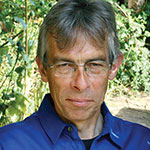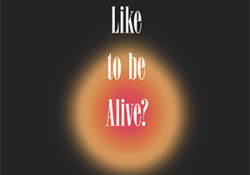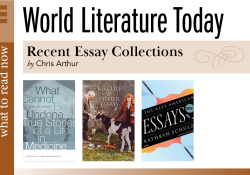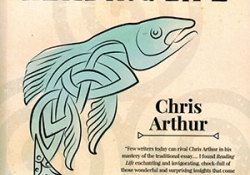Escaping Indoors
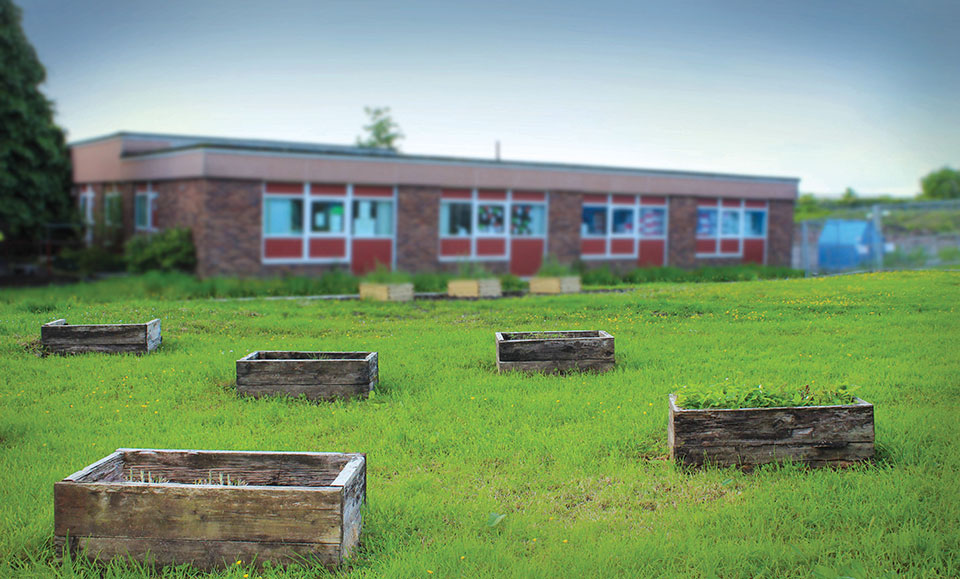
In a series of vignettes, essayist Chris Arthur considers why “respecting what gives life is not a lesson to be learned indoors.”
In E. M. Forster’s A Room with a View, there’s a revealing moment when the heroine, Lucy Honeychurch, is walking in the countryside with Cecil Vyse, her unsuccessful suitor. In answer to a question he puts to her, she admits that whenever she thinks of him she always pictures him indoors, in a drawing room with no view.
Why begin an essay on climate change with fictional characters from a comedy of manners written a century ago? Improbable though it sounds, Cecil, Forster’s effete creation, can be cast as environmental villain or fool. He represents the mind-set that stands in the way of effectively addressing the problems which confront us. In case this sounds like evading responsibility by passing the blame to someone else, let me say at once that I can see aspects of Cecil’s lethal indoorness in myself and in everyone I know. We all need to change.
Like Cecil, millions of us have become more defined by the time we spend indoors than outside. As a result, we’ve lost touch with the natural world. Those with the most pronounced indoor sensibilities can’t identify even the commonest species of birds, insects, and plants in their locality. They don’t remember the last time they got thick mud on their shoes. Climbing a mountain or walking by the sea are rare activities, confined to vacations. They may never have visited a farm or witnessed nightfall in a forest; never picked fruit directly from a tree and eaten it, or experienced being alone in a landscape in which there’s no trace of human habitation.
❧
WRITING ABOUT ETHICAL approaches to land use, Peter Carruthers emphasizes “the role of encounter in shaping thinking.” Philosophy and ethics are, he says, “formed by real-life experiences.” If those experiences are predominantly of an indoor world, can our thinking be honed to a sharp enough edge to take on the challenges posed by climate change? Looking at how our understanding of nature has been influenced by the likes of William Wordsworth, John Muir, and Wendell Berry, Carruthers suggests that whether or not we agree with their outlooks, “we should take note of their methodology”—namely, “the way in which their thought is deeply rooted in experiential reality and authentic encounter.”
These are precisely the sorts of reality and encounter that Cecil and his ilk avoid. Yet without them, it’s hard to see how environmental codes of behavior can be properly grounded. Carruthers urges the creation of “opportunities for people (especially young people and city dwellers) to encounter land, nature, and farming.” If our thinking, and the action that it sanctions, is to be focused with the necessary acuity, such encounter is essential.
A nice example of the transformative power of encounter is provided by David Orr in his passionately argued book Down to the Wire: Confronting the Climate Collapse. Considering the Mount St. Helens eruption in 1980, Orr suggests that its impact on the weather offers “a very small preview of a world we should avoid.” He looks at one particular outcome of the eruption: “the hottest, driest summer recorded up to that point in Arkansas.” But Orr doesn’t use the generalized, objective style of academic prose. Instead, he explains how he and his brother were personally affected as operators of a small farm and sawmill:
After the summer of 1980, climate change was important to me, not because I’d thought a great deal about it in an air-conditioned office but because I had first felt it viscerally and somatically. My interest did not begin with any abstract intellectual process or deep thinking but rather with the felt experience of the thing.
Those occupying drawing rooms with no view are clearly insulated from this kind of experience. However much the Cecils of the world may inform themselves about events like Mount St. Helens, their perspectives won’t have the urgency of what’s felt. Reading about the destruction of an ecosystem or watching a TV documentary about an endangered species is useful, yes, but such mediated experience lacks something: the persuasive force—the gravity, if you will—of our physically being in a place and savoring its nature, feeling the sun and rain upon our skin, seeing the landscape up close, hearing its sounds, being immersed in the flavors of what passes moment by moment, and becoming attuned to what threatens to poison and derail.
❧
READING PETER CARRUTHERS'S cogent pleas for more experiential contact with the natural world brought back memories of when I worked as warden on a nature reserve. The reserve was an area of marsh and woodland that ran along the shores of Lough Neagh, the largest lake in the British Isles and Northern Ireland’s enigmatic geographical heart. Acting as guide to school parties was an important part of the job, and they poured into the reserve at the rate of three or four coach-loads every weekday at the height of the season. Many of the schools were in inner-city Belfast. The indoor sensibilities of their pupils became obvious as soon as they set off to walk the nature trail. They made a great deal of noise yet were disappointed not to see any of the animals mentioned in the trail guide. They had no concept of the caution and elusiveness of wild creatures, expecting them to appear on demand, in easy-to-see TV-like tableaus. They left prodigious amounts of litter, often dropped into one of the reserve’s rivers or in the lough itself. Some were reluctant to leave the buses or go beyond the snack bar in the car park. Wildflowers were at risk of being picked or trampled, birds’ nests of being robbed or wrecked. They had no patience for sitting in the hides erected on stilts in the shallow water at the lough-side. If the birds on the posters weren’t there, up close and on view immediately, they lost interest. None of them knew the names of any of the species pictured.
It would be foolish to make an environmental mountain out of the molehill of disaffection displayed by city kids on a day’s outing to a destination they hadn’t chosen. But I was left with the strong impression that however much they might excel in math, English, chemistry, history and their other school subjects, these children were profoundly ignorant about the natural world. No doubt their schools had the requisite teachers, classrooms, computers, books, sports facilities, a library, a cafeteria, etc.—all the things thought necessary to educate. But I often wondered—still wonder—why it is that a garden or small wooded area, a field, a stream, or patch of marshland are not also thought essential adjuncts for the business of learning. Is it any wonder children are ill-attuned to nature if their education happens at arm’s length from it?
I often wondered – still wonder – why it is that a garden or small wooded area, a field, a stream, or patch of marshland are not also thought essential adjuncts for the business of learning.
No serious experiential exposure to the outside, natural world was built into their curriculum. Their learning had somehow slipped its moorings and drifted away from any connection with the environment. With the focus always on indoor abstracts, it’s easy to see how the children I shepherded around the reserve would grow up to become, and to vote for, the kind of purblind politicians Jonathon Porritt warned of thirty-five years ago in his classic study of ecological politics, Seeing Green. His book includes two sentences that should be carved into the stonework of every government building in the world:
The state of the planet provides the context within which all politicians operate. Yet the vast majority of them remain oblivious of that context, or choose to ignore it.
❧
The indoor environments so many of us inhabit may be like the milieu Lucy Honeychurch imagined for Cecil—rooms without a view—but that doesn’t mean we see nothing from them. Computers, phones, TV, radio—all the portals of our media—provide an incessant buzz of input. We have access to a wealth of information previous generations would have been amazed by. Some of it may prompt a sense of environmental awareness. There are, for example, nature documentaries that flag up with potent visual fluency the problems we’re facing and creating. But much of what we view through our sophisticated media portals is just titillation or distraction. In fact, the way in which the profound and the trifling stand in relation to each other, and how easily the latter can eclipse the former, has potentially devastating implications for the way in which we think about climate change. According to the historian Theodore Zeldin, “What to do with too much information is the great riddle of the age.” A more urgent riddle, I would argue, is to find a way, moment by moment, day by day, of parsing that information so that what’s vital reaches us, is absorbed and acted on, and we’re not distracted by what, in comparison, simply doesn’t matter.
David Orr gives a good example of how easily the momentous can be obscured by a scrim of trivia:
In Our Final Hour, Cambridge University astronomer Martin Rees concluded that the odds of global civilization surviving to the year 2100 are no better than one in two. His assessment of threats to humankind ranging from climate change to collision of earth with an asteroid received good reviews in the science press, but not a peep from any political leader and scant notice from the media. Compare that non-response to a hypothetical story reporting, say, that the President had had an affair. The blow-dried electronic pundits, along with politicians of all kinds, would have spared no effort to expose and analyze the situation down to parts per million.
The fact that our indoor world is one where “blow-dried electronic pundits” set the agenda of media coverage, rather than those with the integrity and intellectual clout of Sir Martin Rees, means that public consciousness is daily fed a diet rich in priority-toxins. Saturated with a stifling blanket of advertising, glitz, and gossip, we’re prevented from seeing—or seeing clearly—what desperately needs to be seen.
❧
MUCH OF THE FLOOD of information that washes over us in our indoor world comes in the form of images, and, as Susan D. Moeller has pointed out, images “cannot help but simplify the world.” The simplifications they offer can be constructive—educative—helping us to grasp new ideas and see a way through complexities that might otherwise leave us stalled and baffled. There’s nothing intrinsically wrong with simplification; indeed we rely on it all the time. As Karl Popper said, “Science may be described as the art of systematic over-simplification.” But images and their persuasive simplifications can also distort and distract. The reason images are so important is because they have what Moeller calls “authority over the imagination.” What matters is not that these authoritative devices simplify—that’s inevitable—but the quality of the simplifications they put before us.
At this point in the twenty-first century, what sort of images should we allow our imaginations to be governed by? This is a crucially important question since the choices we make will do much to mold the inner topography of the psyche and thus determine how we act. Our attention is jostled by scores of competing candidates—scientific, religious, commercial, political, artistic. Whatever we select out of this hubbub is of course a personal choice. For my own part, one image has come to have a particularly disturbing resonance.
Although I’m not a Buddhist, the image has a Buddhist source, the so-called Parable of the Poisoned Arrow. This tells of a man who falls victim to an unknown assailant—someone shoots an arrow at him when he’s out walking. It hits him in the abdomen. After the first shock of impact and injury, the man puzzles over the likely identity of the unseen archer. What has he done to provoke this attack? He reviews possible culprits—people to whom he might have given offense. Was it a neighbor he’d insulted, a family member who felt slighted, a political opponent, a rival in love? He looks at the arrow for clues. Perhaps the type of wood used for the shaft will reveal something since people in some locales make their arrows from oak or ironwood, while elsewhere pipal is preferred. The staining at the end suggests poison. Running his finger over it and smelling the sticky residue he tries to identify the type of plant material used, knowing that some villages use one type of berry, others opt for concoctions of bark or fungus. Then he turns his attention to the feathers on the arrow’s flights. Are they goose or swan or egret? If he can decide on the type and style, it will point to the fletcher responsible for making them, and that in turn will help him find his assailant.
And of course the man dies.
We – as a species, as a planet – are grievously injured by the arrows of carbon emission, yet much of our energy is taken up with the equivalent of examining the feathers on the flights of the arrows that afflict us.
Instead of doing the one thing that was essential—pulling the arrow out and tending the wound—he wastes time, our most precious nonrenewable resource, by speculating about what, in the circumstances, is of such secondary importance it’s irrelevant. The Buddha used the story in response to a monk whose preoccupation with abstruse metaphysical questions was preventing him from engaging in any practical action to lessen suffering. But the story slips into a climate change guise with disconcerting ease. We—as a species, as a planet—are grievously injured by the arrows of carbon emission, yet much of our energy is taken up with the equivalent of examining the feathers on the flights of the arrows that afflict us.
❧
IN A MOVING ESSAY in the New York Times, Laureli Ivanoff writes about the impact of climate change on the Iñupiat, a northern indigenous people. She notes that “last winter, there was less ice in the Bering Sea than any winter since the start of record-keeping in 1850.” She laments the effects such warming is having on the creatures the Iñupiat depend on. A tradition of hunting bearded seals that stretches back some 2,500 years is now threatened. Ivanoff fears that her baby son may never participate in this central practice of their culture. The sea is becoming too warm for the formation of ice, which means the seals will go elsewhere or simply perish. Ivanoff’s elegiac lament recognizes that the environment she knew as a girl will not be the one her son inherits. Instead, he and his contemporaries will have to cope with
[a]n ocean changing so rapidly that the auklets, puffins and other seabirds are dying and washing up on Alaska shores in alarming numbers. He has inherited a Norton Sound that, I fear, is becoming too warm for ice to form and ugruk (the Iñupiat name for bearded seal) to survive.
This is, of course, just one specific instance of the impact of rising temperatures. The world is in the grip of the warmest weather it’s seen since records started. Since 2015 the annual global average surface temperature has been 1ºC above that of pre-industrial levels. There’s a risk that before 2023 this increase will exceed the 1.5ºC threshold set out in the Paris climate agreement. Unless greenhouse gas emissions are curbed, global average temperatures will continue to rise. As the secretary-general of the World Meteorological Organization puts it:
Extreme and high impact weather affected many countries and millions of people, with devastating repercussions for economies and ecosystems in 2018. . . . Many of the extreme weather events are consistent with what we expect from a changing climate. This is the reality we need to face up to. Greenhouse gas emission reduction and climate adaptation measures should be a top global priority.
Thousands of miles away from the Bering Sea that is Laureli Ivanoff’s immediate experience of these “devastating repercussions,” I picture the Belfast schoolchildren who used to visit the nature reserve. They’d be grown up now, part of the adult world—homeowners, parents, voters, employed in a whole spectrum of professions. And unless something along the way changed radically, they’ll still be fundamentally ignorant about the dynamics of the natural world. How many of them recognize our arrow-struck condition? How much time do they spend indoors, closeted with computer games, TV, and social media, compared with time spent outside directly experiencing the natural world on which we all depend?
❧
“HUMAN HISTORY has become more and more a race between education and catastrophe.” Although it was made almost a century ago, H. G. Wells’s pronouncement seems even more apt today. Looking at the contemporary situation, one could be excused for thinking that education is lagging so far behind that it has no hope of catching up. It may be that climate change will win, bringing a scale of catastrophe that will overwhelm us, perhaps pushing us—and countless other species—to the point of extinction. Nor is it by any means the only competitor running in catastrophe’s colors—nuclear accident or war, terrorism, poverty, epidemic, starvation—there’s a formidable team arrayed against us.
Meanwhile, education too often seems distracted from the essential business of winning. Either it’s starved of funds or is devoting time to studying the feathers on the flights of catastrophe’s quiver of arrows. The philosopher R. G. Collingwood once said that “[w]e try to understand ourselves and our world only in order that we may learn how to live.” The connection between learning and living has become so tenuous in many educational establishments that it often seems at risk of being lost.
❧
I’M AWARE OF the fragmentariness of this essay. Instead of an orderly progression from the first sentence to the last, providing incremental detail to substantiate an argument step by step, I’ve preferred to move from one vignette to another. This modus operandi seems appropriate to our situation. The result is a kind of leaping from one verbal ice floe of concern to another, amidst a melt of distraction. Can you feel these ice floes rock and tip and tremble? Can you feel them shrink? How often was my progress—your progress—between them interrupted by Snapchat, Instagram, Facebook, Twitter, text, TV and email? Are we losing our ability to maintain a steady line of concentration? Do we have the necessary balance to keep to the stepping stones of sense?
Can you feel these ice floes rock and tip and tremble? Can you feel them shrink? Do we have the necessary balance to keep to the stepping stones of sense?
It’s easy to lose your footing when the sea ice of communication has become so treacherous. Wisdom—a rare enough commodity at any time in history—now has its islands surrounded by a rising tide that’s littered with an alluring wash of trivia. Intelligent utterance about serious subjects is swamped and mocked by the twittering of fools. Perhaps media ecologist Neil Postman was right and we’re amusing ourselves to death. Certainly his picture of the decline of public life into the vacuous dynamics of show business has a horrible plausibility. Postman’s analysis of American politics was worrying enough when it appeared nearly thirty-five years ago. Read today it seems unnervingly prescient in its prediction of a spiraling descent into tawdriness.
Our tragedy as a species may be that by the time the impact of climate change reaches into even the most complacent indoor bastion of the psyche, it may be too late to do anything about it.
It’s hardly original to suggest that a change in our inner weather is an essential precursor for dealing responsibly with the climate change that’s now altering our world, perhaps forever. Of course even the most indoor sensibility can be informed about the threats that face us. Many of those who occupy rooms whose dominant view is that supplied by the media may nonetheless be committed to implementing the curative strategies that need to be brought into play. But perhaps if more of us spent more time outside, directly engaged with nature, it would add the iron of firsthand experience to what may otherwise be lukewarm conviction based on something that’s too abstract to engage us. Our tragedy as a species may be that by the time the impact of climate change reaches into even the most complacent indoor bastion of the psyche, it may be too late to do anything about it.
❧
IN The Ethics of Climate Change, James Garvey warns that “the end of a book on climate change can be a dangerous place.” He notes how authors have what he calls “a worrying tendency to veer off into grandeur about five pages from the end.” Given the nature of the subject, it’s perhaps understandable that people succumb “to an uncontrollable urge to engage in some soothsaying,” such that they end up making grandiose pronouncements about the course of human history, our destiny as a species, the parlous impact we’re having on the biosphere. Even at the end of a short essay like this, I can feel the urge to shift into apocalyptic gear, empurple my prose, and write about imminent planetary disaster and the urgent need for change at an individual, national, and international level. While some sort of drum roll and dramatic climax might be forgivable in a sequential argument that was moving step by strategic step toward some dénouement, it would be out of place in the more meandering approach I’ve favored.
I’ll content myself with a final leap onto another ice floe of wisdom. From there, if you’re so minded, you can jump back to the beginning, rejoining Lucy Honeychurch and Cecil Vyse on their ill-starred walk together. This leap is onto something said by Henry David Thoreau, whose close experience of nature created a sense of how to live that we can still learn much from. According to Thoreau: “Moral reform is the effort to throw off sleep.” Of course he didn’t mean actual slumber, but rather the sleep of inattention, profligate consumerism, indifference to others, distraction, sheer inertia, and just not caring. The knowledge we are privileged to have access to carries with it a huge awakening potential—as do the various media through which it’s communicated. But too often things we should be able to rely on to inform and enlighten us—to wake us up—instead act like soporifics.
Laureli Ivanoff concludes her essay thus:
My son, not yet crawling, may never harvest an ugruk for his family. His experience is already one of loss. But I remember our values. Our ways of being. Though the earth changes, it is still giving. Providing. Nurturing. Inuqtaq [her son] will still learn respect for what gives life. I hope the rest of the world quickly adapts and also respects the earth—as we have for millenniums and will continue to do.
Respecting what gives life is not a lesson to be learned indoors. Will we waken from our slumbers in time to venture out and tend our arrow-injured world with the necessary mix of knowledge, determination, and compassion?
St. Andrews, Scotland
References
Peter Carruthers, “The Land Debate – ‘Doing the Right Thing’: Ethical Approaches to Land-use Decision Making,” in What Is Land For? The Food, Fuel and Climate Change Debate, edited by Michael Winter & Matt Lobley (Earthscan Publishing, 2009), 310.
R. G. Collingwood, Speculum Mentis or The Map of Knowledge (Clarendon Press, 1924), 15.
E. M. Forster, A Room with a View, 1908 (Penguin Modern Classics, 1974), 113–114.
James Garvey, The Ethics of Climate Change: Right and Wrong in a Warming World (Continuum, 2008), 155.
Laureli Ivanoff, “The Bearded Seal My Son May Never Hunt,” New York Times, October 21, 2018, 7.
Susan D. Moeller, Compassion Fatigue: How the Media Sell Disease, Famine, War and Death (Routledge, 1999), 2, 43.
David W. Orr, Down to the Wire: Confronting the Climate Collapse (Oxford University Press, 2009), 218, 1.
Karl Popper, The Open Universe: An Argument for Indeterminism (Routledge, 1988), 44.
Jonathon Porritt, Seeing Green: The Politics of Ecology Explained (Blackwell, 1984), 119.
Neil Postman, Amusing Ourselves to Death: Public Discourse in the Age of Show Business (Methuen, 1986).
Henry David Thoreau, Walden, or Life in the Woods (Dent & Son, 1912), 78.
H. G. Wells, An Outline of History, 3rd rev. ed. (Macmillan, 1921), 41.
World Meteorological Organization: the secretary-general’s comment and the figures on global average temperature rise are taken from BBC environment correspondent Matt McGrath’s “Climate Change; World Heading for Warmest Decade, Says Met Office,” BBC News, February 6, 2019.
Theodore Zeldin, An Intimate History of Humanity (Minerva, 1995), 18.
